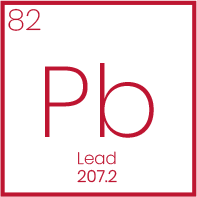Laboratory
Lead in Drinking Water - Did You Know?
Apr. 1 2020
Did you know...
| The word plumbing has its roots in the Latin word for lead, plumbum. This was the preferred material for water pipes in ancient times. | |
| There is evidence that infamous Roman emperors Nero and Caligula were victims of lead poisoning due to the lead water pipes that the ancient Romans had created for their elite citizens, and that this was the reason their eccentric behaviours. | |
| Most jurisdictions in North America stopped using lead pipes for drinking water in the early part of the 20th century, since the adverse health effects of lead were becoming well known. Lead pipes weren’t totally banned from use in Canada until the 1970s and the early 1980s in the United States. Lead-based solders were discontinued for drinking water applications in the mid-eighties in North America. | |
| “Hard” water in the home results from elevated levels of calcium and magnesium in the water. It can lead to a layer of scale coating the inside surface of pipes. This hard layer of scale is actually beneficial for pipes connected with lead-based solders. The build-up of scale can act as a protective layer preventing lead from leaching into the drinking water. | |
| A public water crisis occurred in Flint, Michigan after the drinking water source for the city was changed from treated Lake Huron water to untreated water from the Flint River. This change led to extremely high levels of lead in the municipal drinking water. When the municipality changed their water source from Lake Huron to the Flint River, the new, more corrosive water source stripped the pipes of their protective layer of scale, re-exposing the lead in the pipes to the water. | |
| The best time and place to collect a “worst case” residential water sample for lead is Monday morning, before any water has been used (including toilets). The sample should be taken from a faucet that is furthest from where the water main enters the house, often an upstairs bathroom. |




